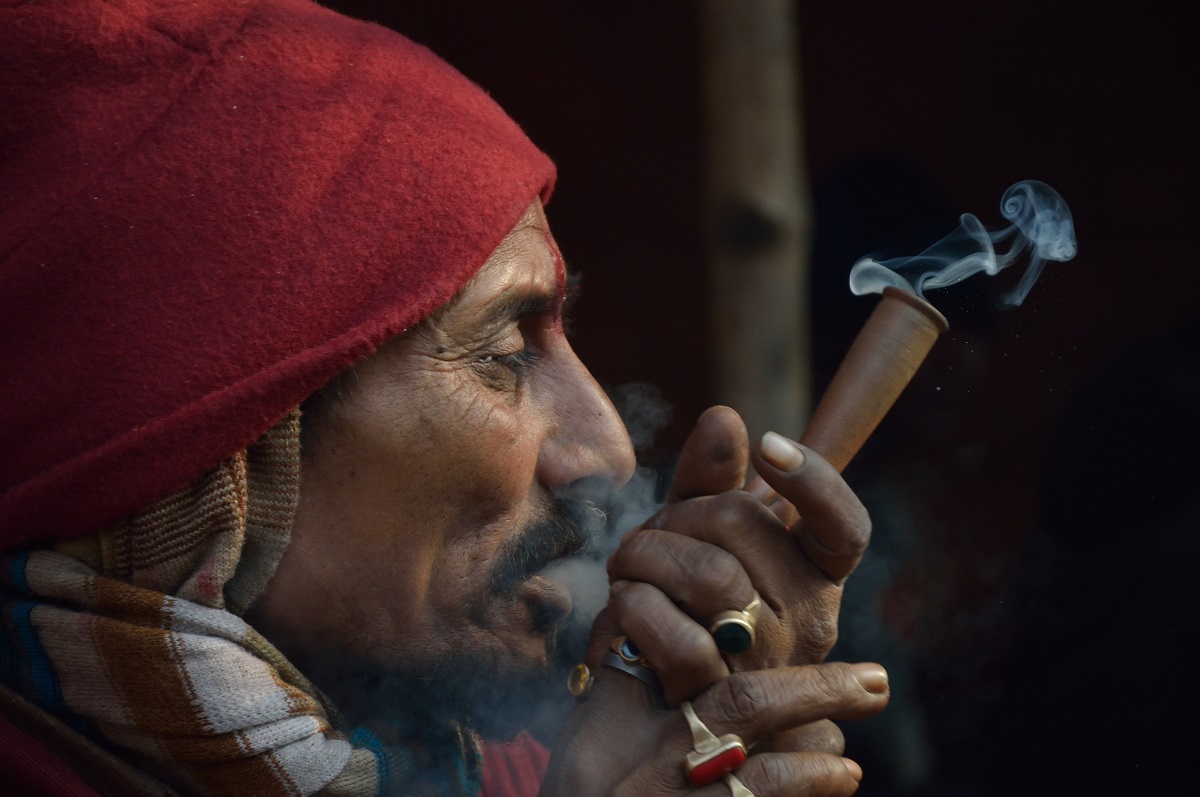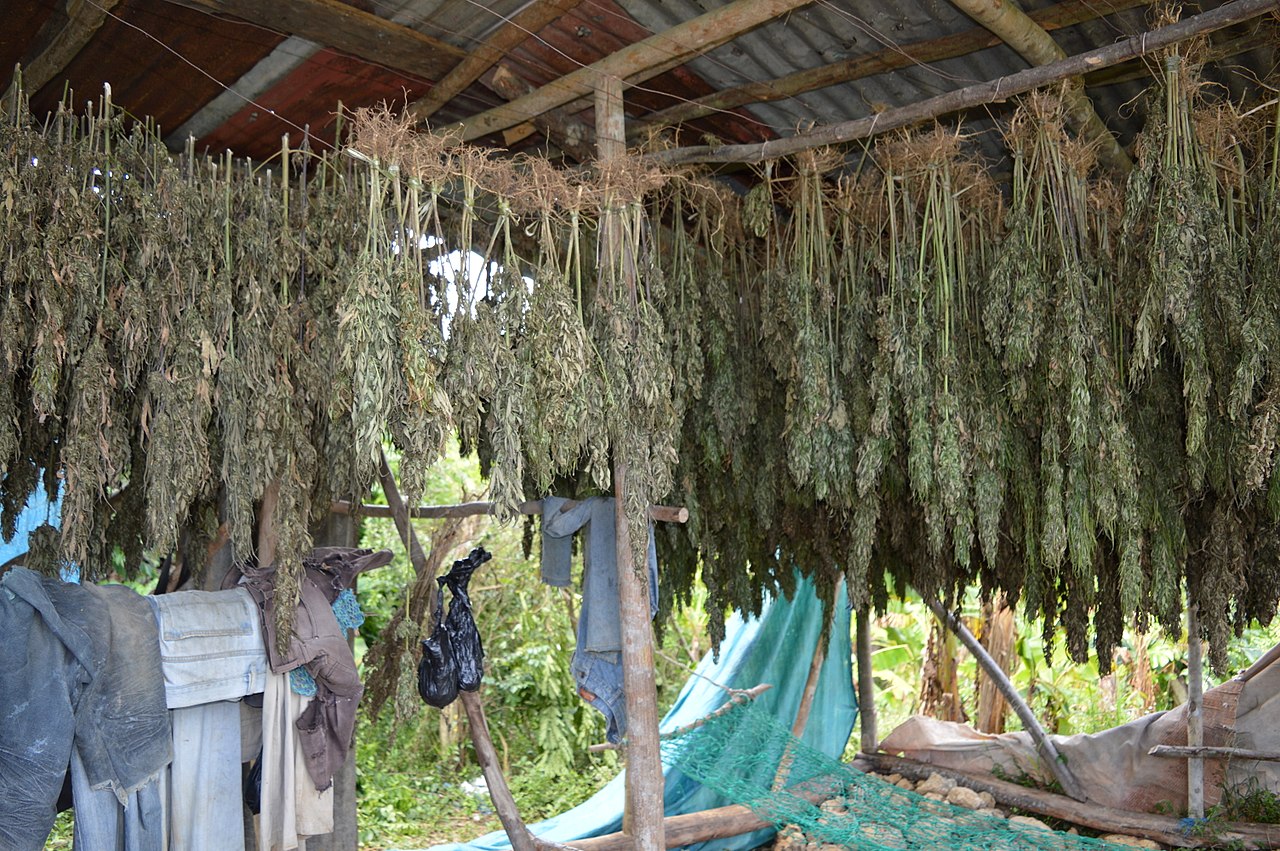
Ganja (marijuana) is deeply embedded in the Jamaican psyche, going beyond Rastafari sacrament, taking on cultural proportions.
Indians are to be partially blamed/commended for this cultural phenomenon. They either gifted the country with hemp when they arrived as indentured laborers in the wake of emancipation, the end of African enslavement, in 1838; or they, knowing the plant back in India, demonstrated its versatility upon discovering it on the island. Ganja and kali, two words for the popular hemp variety in Jamaica, may have had Indian/Hindu derivative.
There is another side to the story. “It [was] brought to the Americas by the Portuguese, who took it to Brazil, and again by the British, who took it to Jamaica. In both cases, it was used to pacify slaves,” Barney Warf, a professor at the University of Kansas in the United States, told Vice magazine in 2015. Warf said further:
You had cannabis being grown by the British East India company. [They] grew it in Bengal and India and exported it to Guyana, South Africa, and Jamaica. [They] taxed it heavily and encouraged its plantation well after slavery ended there. It was sold in company stores in Jamaica…well up into the 20th century.
E.L. Abel seems to agree with Warf. In Marihuana: The First Twelve Thousand Years, he said the British explored growing ganja commercially on the island. “There is also no exact date for the importation of hemp to Jamaica. Around 1800, the British sent a Russian hemp expert to Jamaica to see if the plant could be possibly raised on the island, but the attempt failed, and production was abandoned.”
Abel says these abandoned plants attracted the attention of indentured Indians. “Nevertheless, the plants began to grow wild. When indentured laborers from India came to work in Jamaica following the emancipation of the Negro slaves in the British Caribbean in the nineteenth century, they found ganja already growing there.”
It was well known that ganja, like other varieties of hemp, has several uses, actual and potential – building material, fabric, paper, cordage, animal bedding, water purification, soil conservation, weed control, biofuel, etc. It was these uses and more that British and other colonialists wanted to explore.
With their failure to make ganja a commercially viable crop, the British turned against the plant. Robert Clark and Mark Merli suggest they were scared off by widespread adoption made by black Jamaicans, no longer slaves to pacify. “Apparently, cannabis’ use for mind-altering purposes developed in Jamaica after African slaves were emancipated in the British Caribbean in the mid-nineteenth century,” they wrote in Cannabis: Evolution and Ethnobotany.
Ganja criminalized
Jamaica’s love-hate relationship with ganja was formalized when the British colony outlawed the plant. “The colonial government of Jamaica added cannabis in their legislation when they ratified the 1912 Hague Convention in 1913, and outlawed it a decade later,” the Transnational Institute reported on its history of cannabis prohibition. Jamaica strengthened its opposition to the plant’s use, if not its presence, by signing on to subsequent United Nations agreements in 1961, 1971 and 1988.

While officialdom took on ganja, the public took to it. Its use became more widespread when Rastafari, a religious protest movement birthed in the 1930s, adopted it as a sacrament. Ganja’s use on the island remains high, though it does not fit a North American stereotype that all Jamaicans are users. A 2013 Knowledge, Attitudes and Practices survey found 57 percent of Jamaicans admitted using the “weed” at some point. More than half (55 percent) of the population would want its use decriminalized.
Enterprising farmers and traders welcomed its illegality, even while they fretted about being caught. As an illegal “drug,” the price paid to growers, distributors and sellers came at a premium. Money this good was hard to resist and the 1970s Jamaica ganja trade became legendary.
In a previous blog post, I noted the following:
One eminent Jamaican intellectual, long since deceased, made the case as to why the growing and exporting of ganja (marijuana) took off in Jamaica in the 1970s. While the greed of growers and exporters was an obvious factor, the incestuous relationship between Jamaican banks (most of them local operations of foreign corporations) and local business elites was also a driving force.
According to this university professor, the same people who formed and led Jamaican large companies and conglomerates were the same ones who sat on the boards of local banks. Their self-interest was a deterrent to new entrants not only in the markets they operated, but into other, highly lucrative areas as well.
That blog post noted further:
Stories circulated of branch bank managers turning down business loan applications because they knew managing directors and general managers at headquarters, who must answer to their boards, would not approve. Accusations were thrown about that after denying business loan applications, the bank managers and leaders themselves, or their cohorts, established businesses based on the very proposals they denied.
Having been shut out of the formal credit sector, enterprising Jamaican businessmen (and a few women) looked elsewhere. Ganja became the source of choice to obtain funding for business. It is alleged that several respectable companies in Jamaica today, big and small, were started with ganja money.
That professor I failed to name was the late Carl Stone.
Sponsored by the United States, war against ganja intensified in the 1980s. Some believe successes against growing and exporting ganja helped opened the door to increased trade and use of crack and cocaine, alternative money trains.
Changed policy
There was always disquiet on ganja’s legal status. Studies were conducted, and commissions formed, to investigate and make recommendations. These included a 1970-1971 joint study between the University of the West Indies and Columbia University in New York, and a Joint Select Committee in 1977 to look at legality, criminality, use and medicinal value of ganja. Nothing concrete seemed to have emerged from these.
The National Commission on Ganja convened in November 2000 and completed its work in July the following year. Chaired by UWI Professor Barry Chevannes, the commission admitted the health risks of ganja smoking. But stated:
Notwithstanding these and other ill effects, the Commission is of the view that many, if not most, persons who use ganja in moderation suffer no apparent short or long term debility. Not only that, but its reputation among the people as a panacea and a spiritually enhancing substance is so strong that it must be regarded as culturally entrenched. As a result, the practice of criminalising the users of small quantities does far more harm than good to the society as a whole.
Furthermore:
It is the view of the Commission that the punitive sanctions administered by the justice system to users of small quantities is not only unjust but is a major source of disrespect and contempt for the legal system as a whole. Moreover, the punishment meted out to such offenders has not had and is not likely to have the desired effect of a deterrent. Administering the present laws as they apply to possession and use of small quantities of ganja not only puts an unbearable strain on the relationship of the police with the communities, in particular the male youth, but also ties up the justice system and the work of the police, who could use their time to much greater advantage in the relentless pursuit of crack/cocaine trafficking.
The commission recommended “that the relevant laws be amended so that ganja be decriminalised for the private, personal use of small quantities by adults” and “that ganja should be decriminalised for use as a sacrament for religious purposes.”
Commissioners proposed “that a Cannabis Research Agency be set up, in collaboration with other countries, to coordinate research into all aspects of cannabis, including its epidemiological and psychological effects, and importantly as well its pharmacological and economic potential, such as is being done by many other countries, not least including some of the most vigorous in its suppression.”
It appears the 2001 commission recommendations are now being taken to heart. The Jamaican government established “The Cannabis Licensing Authority (CLA), an agency of the Ministry of Industry, Commerce, Agriculture and Fisheries… in 2015 under the Dangerous Drug Amendment Act, (DDA) with a specific role to establish and regulate Jamaica’s legal ganja and hemp industry.”
The CLA, chaired by Hyacinth Lightbourne, a Jamaican attorney, issued its first two licenses in October 2017. In March 2018, it reaffirmed its intention to “maintaining a medicinal cannabis industry.”
Things have come full circle. Those who demonized ganja are jumping on the bandwagon and are increasingly singing its praises because there’s greater [legal] commercial potential. The lesson is clear. A path to control and monetary benefit eases concerns as to ganja’s potential or perceived risks.
Those who previously saw value in the plant are likely being squeezed out of large commercial opportunities while the new champions position to benefit enormously.
Eron Henry is author of Reverend Mother, a novel. Ole Time Sumting blog was recognized with an Award of Merit by the Religion Communicators Council in April 2018
Other aspects of the Commissions recommendations relating to personal possession, planting and sacramental use are also now in effect as summarised by the JIS at the link below:
https://jis.gov.jm/features/dangerous-drugs-act-facts/